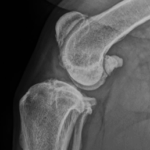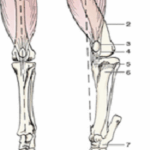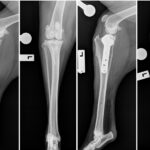
Anatomy of a dog’s heart
Did you know that up to 10% of all dogs may have some degree of heart disease, with the incidence rising to over 60% as they age?
All too often, we see dogs with quite advanced signs of heart disease where the owner had just assumed that it was just a part of the normal aging process.
We have created a list of the top 7 signs to watch for which may indicate that your dog has heart disease.
1. Coughing
A persistent cough, particularly in breeds such as Cavalier King Charles Spaniels, is the most common sign of heart disease that we see. As the heart disease progresses, we can see a build up of fluid on the lungs, which causes the cough. We can also see cases where the heart becomes larger as it tries to compensate for its poor function, which can then compress the trachea, causing a cough.
2. Changes in breathing
This may be difficulty breathing, shortness of breath, or an increased breathing rate. A normal resting respiratory rate (when your dog is lying down and relaxed or asleep) is between 10-20 breaths per minute. A rate of over 30 breaths per minute, or a gradual increase over time may be a sign of heart disease.
There is a really useful app which can be downloaded to help you monitor and track your dog’s respiratory rate, which can be found at:
Android: https://play.google.com/store/apps/details?id=com.bivi.restingrespiratoryraten
iOS: https://itunes.apple.com/us/app/id593676501?mt=8
3. Changes in behaviour
Your dog may have less energy, be withdrawn or just not their usual self. There are a wide range of problems which may cause this and it’s rarely “just a part of getting old”, so it is worth a check-up at the vet if you notice these signs.
4. Exercise intolerance
Whether it is losing their love of walks or getting tired easily, most dogs with heart disease can’t exercise like they used to.
5. Poor appetite and weight loss
This may be because the dog struggles to stop breathing long enough to eat a mouthful, or because of poor oxygen supply to the gut and tissues. Occasionally we may see a dog with a bloated looking belly. This is from a build up of fluid in the abdomen, so although they may look “fatter”, it’s not from gaining fat.
6. Weakness and fainting
We see this particularly for dogs with intermittent heart problems such as arrhythmias. Some dogs have a normal heart rate and rhythm, but it will suddenly become erratic and the heart becomes inefficient at pumping. We also see cases where fluid will build up around the heart, causing the dog to collapse.
7. Restlessness, especially at night
Many dogs with heart disease don’t sleep well. This is a combination of factors, including needing to breathe harder and faster than normal, poor oxygen supply to the tissues, and possible coughing – this becomes pronounced when they are lying down.
If you notice any of these signs in your dog, we recommend a check up with your vet. Although we often can’t cure the underlying disease, we can normally improve your dog’s quality of life and keep them feeling happy and healthy for longer.



